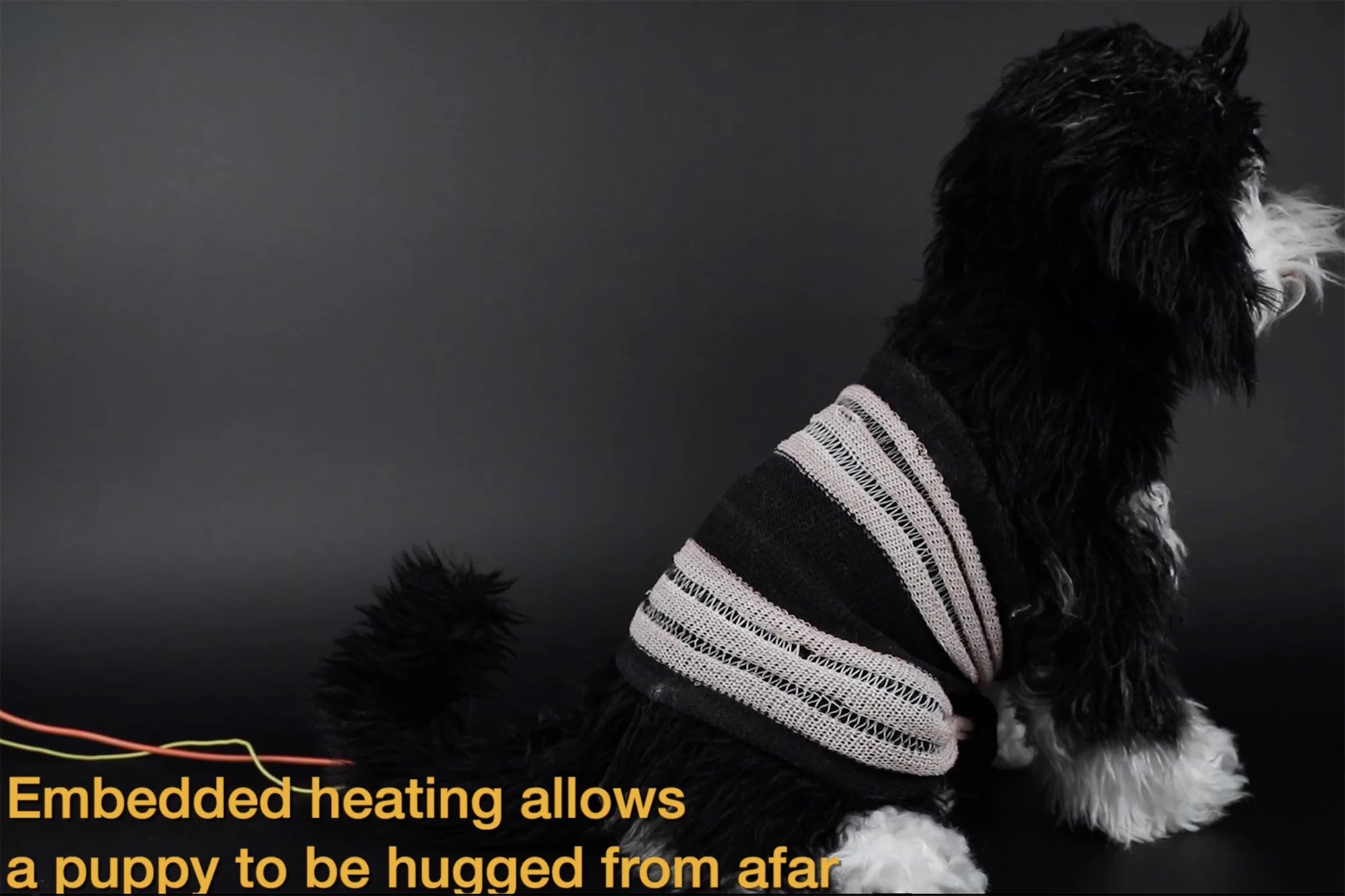Researchers have created a low-cost fiber that contracts in response to heat, resuming its shape when the heat is removed. Compatible with existing textile-producing machinery and not reliant on sensors or other hardware, the shape-shifting fiber could have a myriad of uses.
For a while, researchers have been working to produce shape-changing fibers that can be incorporated into textiles for use in a range of applications, from keeping people warm to lining planes. But many require hardware that makes it impractical for use outside of the laboratory setting.
Now, researchers at MIT and Northeastern University have developed a low-cost actuating fiber called FibeRobo that changes shape in response to temperature and is compatible with existing textile manufacturing machinery, meaning it has the potential to be used in the real world.
“We use textiles for everything,” said Jack Forman, lead author of the study. “We make planes with fiber-reinforced composites, we cover the International Space Station with a radiation-shielding fabric, we use them for personal expression and performance wear. So much of our environment is adaptive and responsive, but the one thing that needs to be the most adaptive and responsive – textiles – is completely inert.”
To create a fiber that could actuate silently and change shape while being compatible with common textile manufacturing procedures, the researchers turned to liquid crystal elastomer (LCE). A liquid crystal is a series of molecules that can flow like liquid but, when they’re allowed to settle, stack into a crystal arrangement.
They incorporated these crystal structures into a stretchy elastomer network. When heat is applied to the LCE, the crystals fall out of alignment and pull the elastomer together, causing the fiber to contract. When the heat is removed, the molecules revert to their original alignment.
A fiber is created by slowly squeezing heated LCE resin through a nozzle while curing it with UV light. The light must be just right. Low light causes the material to separate and drip; too bright, and it causes it to clump. The fiber is then dipped in oil to give it a slippery coating and cured again with strong UV light, creating a strong, smooth fiber. Finally, it’s collected into a top spool and dipped in powder so it can slide easily into textile manufacturing machines.
“There are a lot of knobs we can turn,” Forman said. “It was a lot of work to come up with this process from scratch, but ultimately it gives us a lot of freedom for the resulting fiber.”
From chemical synthesis to finished spool, the process takes about a day and produces about a kilometer (0.6 miles) of ready-to-use fiber. The fiber, which the researchers dubbed FibeRobo, can be produced at 20 cents per meter (3.3 ft), about 60 times cheaper than commercially available shape-changing fibers. It can contract up to 40% without bending, although the skin-safe version contracts up to about 25%.

The fiber can be incorporated into industrial sewing and knitting machines, and non-industrial hand looms, as well as being crocheted, without any process modifications. To test FibeRobo’s capabilities, the researchers used an industrial knitting machine to create a compression jacket for Forman’s dog that can ‘hug’ the pet using a Bluetooth signal from a smartphone. They also used it to create an embroidered adaptive sports bra that tightens when the user begins exercising.
The researchers plan to make FibeRobo’s chemical components recyclable or biodegradable and streamline the polymer synthesis process so users without lab expertise can make it on their own.
“At the end of the day, you don’t want a diva fabric,” Forman said. “You want a fiber that, when you are working with it, falls into the ensemble of materials – one that you can work with just like any other fiber material, but then it has a lot of exciting new capabilities.”
In the future, the researchers hope that people will be able to buy FibeRobo in a craft store, just like they would a ball of yarn, and use it to create their own morphing products.
The study will be presented at the 36th Annual ACM Symposium on User Interface Software and Technology in October 2023, and the below video, produced by MIT, demonstrates FibeRobo’s capabilities.
Source: MIT







